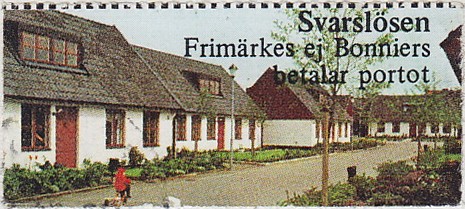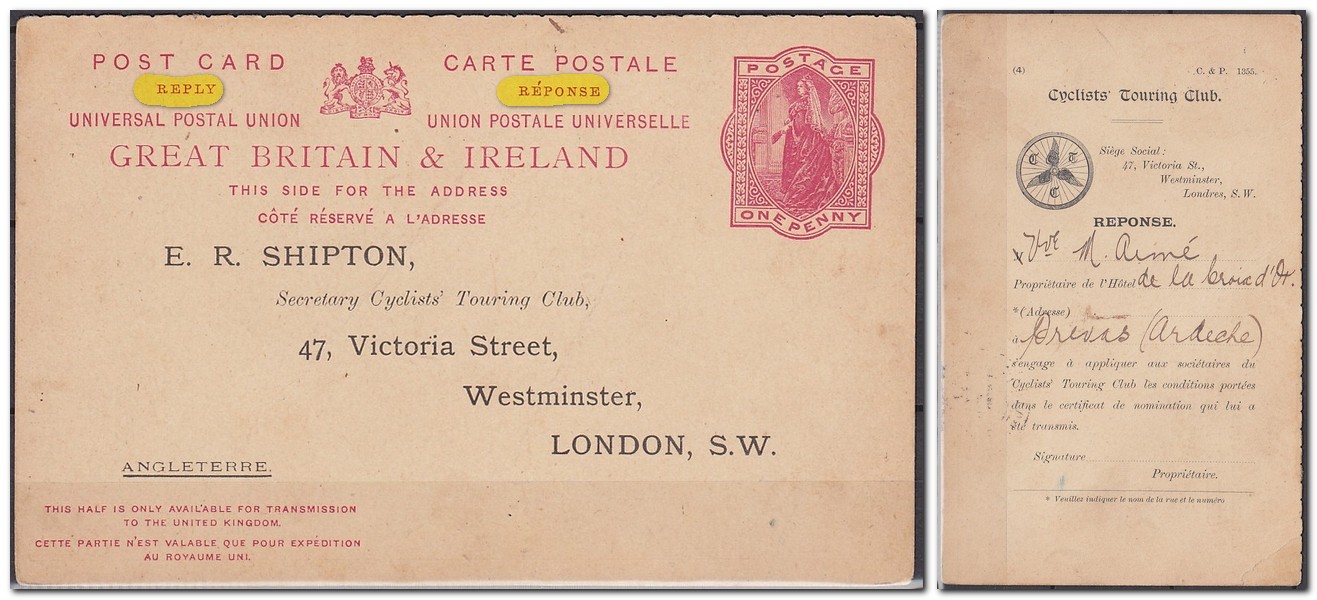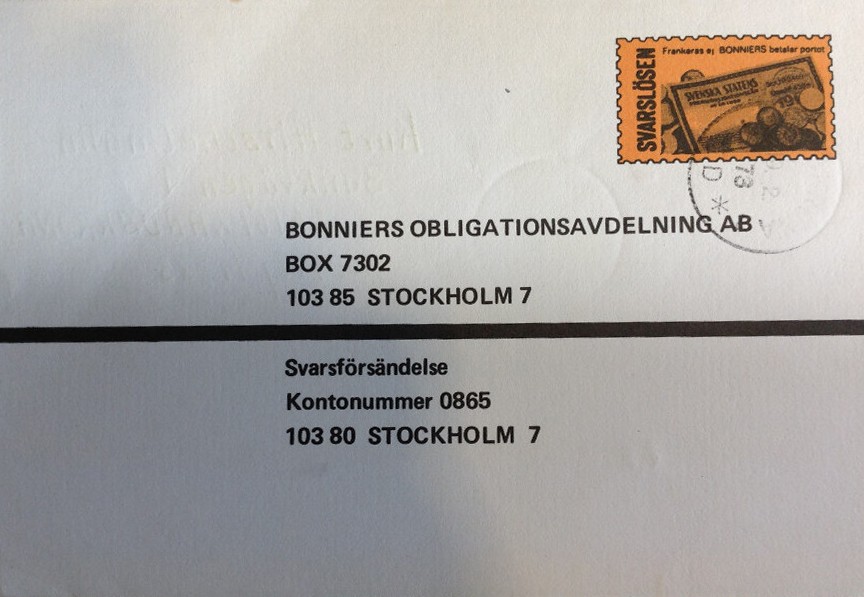Svarslösen – betalar portot
In the section "Locals and Stamps with limited postal Significance" of Batho’s checklist you can find the following entry:
Behind the above entry the following item hides (do not miss the child on the tricycle):
Designed by Sven Erik Olsson and printed by Oriel-Tryck in Lindesberg.
This is a special kind of “stamp” – the so called „Reply License Stamp“. It came up 1968 in Sweden - followed by Norway with the “svarsending posten” in 1974. The postage had to be paid by the licensee after delivering (betalar portot) - normally a company.
Reply postal stationeries are known for over 100 years. They were even used for overseas – like this one from France returning to the United Kingdom:
The Swedish “Reply License Stamp” is comparable with the German “Antwort”- card from DEUTSCHE POST:
The Antwort-cards are categorized as Cinderella in the online catalog.
In 1967 “Det Bästa” the Swedish Reader’s Digest obtained the first permission from the post to distribute cards bearing these reply stamps. The Post Office had strict regulations concerning the appearance of the reply license stamp: every issue must be approved and a copy submitted for the archives. Like every other postal item the reply cards must be cancelled with a stamp showing city and date.
Batho’s label was used on reply cards like this one:

“Obligationsavdelning = bond department
Bonniers - the probably wealthiest private company in Sweden - was the second company using these reply stamps, starting in 1970. Bonniers bond department managed bonds for the Swedish state - payback guaranteed.
The Reply License Stamp had to be separated from an advertising letter and affixed to the reply card. The label was printed in combination with five other tabs:
The tabs were used to indicate how many 1973-premium-bonds (premieobligationer) the costumer wanted to order: either 2, 5, 10, 25 or 50 pieces. The pictures on the tabs show the savings goal: vacation, sailing boat, car and even a house.
The label "2 st. 73: or" means: 2 pieces of the 1973 years premium bond.The buyer was participating in a lottery with the chance to win money on the bond number.
There also exist cards with printed “Reply License Stamps” - unfortunately not a single one showing a bicycle:
There still is the question: how do the used cards come into the hands of collectors? Because of the customer data the companies have probably destroyed them as a rule. Were cards stolen by employees? Are they "made" - cancellation by kindness of a post worker without subsequent dispatch? Do you know more? Then please send an email to This email address is being protected from spambots. You need JavaScript enabled to view it. .
Thanks to my collector colleague Flemming from Sweden for the background information concerning this Svarslösen item. For him as philatelic expert there is absolutely no doubt that these items are Cinderella. OK - unused labels are certainly only snippets. No one has ever paid postage. Used labels on return cards with cancellation like the one shown above indicate that the postage fee had been properly paid - even if the addressee transferred the money to the post company afterwards. The general technical term for „To Pay“ labels (receipt for the post-payment of postage) is "Postage Dues" – see “Mind your Language” from Douglas Merchant (Bicycle Stamps, second issue 1987, see page 13).
It is up to you taking the label into your collection - as whatever. The Bonniers tricycle is not easy to find but on the other hand also not very expensive because there are only a few specialists collecting these special “stamps”.
References: Article from Björn Rombach and David Sher in (Bicycle Stamps, second issue 1987, see page 48).
A User Guide to International Business Response Services, page 31¸Royal Mail Group Ltd 2012
Steve Malone’s “Illustrated Bikes on Stamps”, page 99






